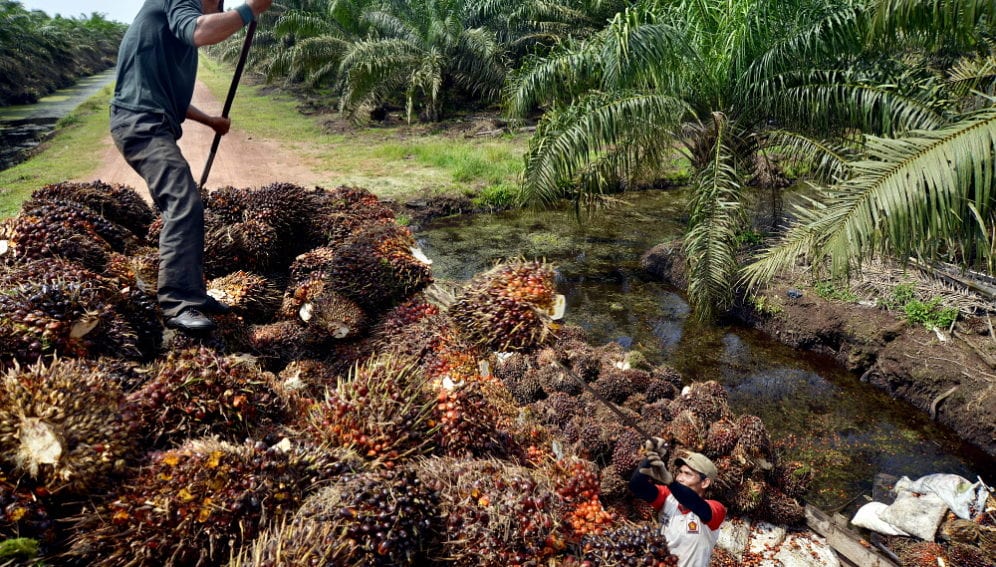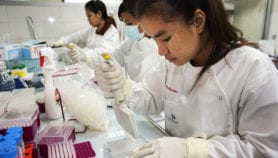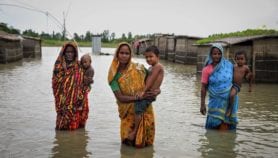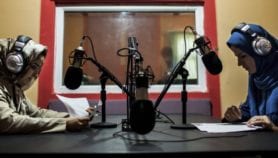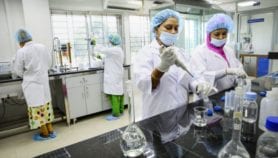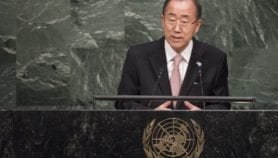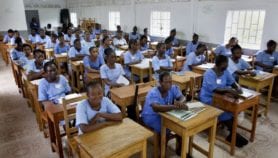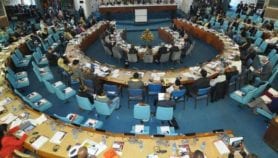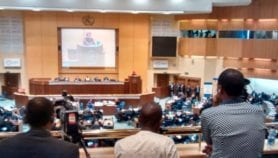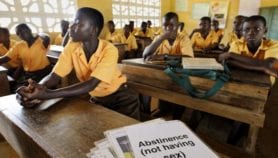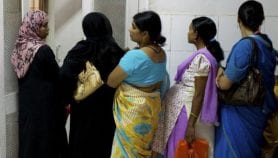By: Rachel Mundy
Send to a friend
The details you provide on this page will not be used to send unsolicited email, and will not be sold to a 3rd party. See privacy policy.
The Sustainable Development Goals (SDGs) are taking shape, with the zero draft of 17 proposed goals published last month and now being revised for the UN General Assembly this September. This is part of preparations for the post-2015 development agenda that will follow the expiration of the Millennium Development Goals (MDGs) next year.
In 2010, as the MDGs were scrutinised a decade after being set up, SciDev.Net asked eight leaders in their fields what they thought science contributed to the achievements — patchy as they were — of the MDGs. They thought science did a lot, though more could had been done to involve researchers in developing countries more actively.
Now, as the MDGs near their end and their successors are being finalised, we went back to some of those experts to ask them what science can do to ensure the SDGs are more successful than the MDGs.
Scientists are playing an active role in drafting the SDGs, through, for example, the Sustainable Development Solutions Network and the UN’s science advisory board.
But not everyone thinks the SDGs are as specific as they should be on improving science capacity and recognising its importance to such goals. Here, for example, we hear that science needs to be unpacked for ordinary people to use it, and that research on climate change and micronutrients needs to be put on the goals’ agenda.
Saleemul Huq is a senior fellow in the Climate Change Group at policy research organisation the International Institute for Environment and Development in the United Kingdom. He was lead author of the chapter on adaptation and mitigation in the panel’s Fourth Assessment Report.
One of the big issues is whether or not climate change should be included in the SDGs, or ignored completely. The MDGs were focused on poverty alleviation, and some thought that climate change was extraneous to what they were trying to do. But the strength of climate science is now at a point where the environmental dimension is coming into the picture.
Fighting poverty is interlinked with fighting climate change and that is what the sustainable development — not just development goals — speak to.
There have been two types of resistance to including the urgency of climate change mitigation in the SDGs: there is already a framework to tackle it, and/or it would just be too complicated to take into account. These arguments are still being fought, but it is healthy to at least have this debate, as the scientific argument needs to be made.
In the SDGs, there will be a focus on universal actions — also requiring richer nations to do more to curtail overconsumption and pollution at home. This is a significant paradigm shift regardless of what we achieve in the end.
The scientific research shows that the poorest countries are the most vulnerable to the effects of climate change, so this double hit of poverty and vulnerability needs to be factored into the goals that are set.
Arne Tostensen, senior researcher and former director of research for development foundation the Chr. Michelsen Institute in Norway, is a co-leader on behalf of the Research Council of Norway with the Ministry of Education in Rwanda of a work package on climate change under the auspices of the European Union-funded CAAST-Net Plus project.
Research has a lot to offer the SDGs, but it needs to be translated into practical, actionable activities and it is this bridging between research, policymaking and practice that is so critical.
The real hurdle for research is to go beyond communication in journals to make a difference to the ultimate beneficiaries: the citizens of each country. Meeting the challenges of uptake requires packaging and communicating research findings so that they are accessible to a lay audience, including policymakers.
The route from research to application is a very long and convoluted one, and it can be very difficult for researchers to attribute a result directly to their research findings. This attribution problem is tremendous. Not only is there a complex relationship between research and policymaking, there is also a very long gestation period before a result can be attributed to research. Although many researchers are unable to say what activities and inputs their projects will lead to down the line, they should at least be able to have a dialogue with policymakers and practitioners about their research. That way we can create arenas or forums for discussion between researchers, policymakers, stakeholders and grass-roots practitioners.
Developing world scientists should play a critical role at the design stage of research priorities. Too often research projects are formulated in Europe and experts from the global South are asked to join. This is the wrong way to go about it — it should be a joint endeavour from the start.
These researchers can bring to the table a better understanding and deeper insight into the problems and challenges in their own countries.
Viroj Tangcharoensathien, a health economist at the Ministry of Public Health in Thailand and a senior advisor to the ministry’s International Health Policy Program, was involved with negotiations on health in the post-2015 SDG forum, the UN Foreign Policy and Global Health group.
While political process drives the decisions on which health issues should be in the SDGs, science implicitly contributes to the debates in terms of what works, and what doesn’t, in the implementation of interventions to achieve health improvements.
A lack of implementation capacity, good governance, political commitment and health system readiness are major bottlenecks to implementing improvements in health in low- and middle-income countries.
These countries are mostly in favour of health system strengthening and universal access to services by all people based on the scientific evidence that failing health systems — including a lack of funding support, financial access to care, health workers and infrastructure for service delivery, especially at the primary healthcare level — are the main bottlenecks to not being able to achieve health-related MDGs, notably in Sub-Saharan African countries, such as Sudan and Zambia.
Science could have contributed more to the evidence on why some countries are not achieving health-related MDGs, generating lessons to avoid mistakes in achieving health improvements in the post-2015 SDGs agenda.
Guido Schmidt-Traub is executive director of the UN Sustainable Development Solutions Network, which UN secretary-general Ban Ki-moon commissioned in 2012 to mobilise science for practical problem-solving.
The SDGs are taking a much broader approach to health, for example, than the MDGs, and this has been down to the UN Open Working Group on SDGs inviting many of the world’s leading scientists to speak to the negotiators about the challenges.
The medical profession, among others, have been very effective at consolidating decades of careful scientific research and disseminating it widely in a way that reaches the policymaker community.
When it comes to the implementation stage of the goals, local scientific knowledge will become very important. It hasn’t yet been included in a systematic manner in the negotiations.
The SDGs must apply to the world as a whole, yet their implementation is dependent on the specifics of local knowledge and conditions. There needs to be problem-solving at regional, national and international levels that takes this into account.
But, science should have — and needs to — do more on the ‘so what?’ question. So, for example, many policymakers accept that climate change is a real challenge, but they struggle to understand what they should do about it. Those are the questions that haven’t really been asked in most countries, rich and poor.
The solutions side of things is where science really needs to get more engaged, as there is much less evidence on solutions and how to implement the systematic transformations that are needed.
Ricardo Uauy is professor of public health nutrition at the London School of Hygiene & Tropical Medicine in the United Kingdom, and former director of Chile’s Institute of Nutrition and Food Technology.
Science tells us it is not enough to reduce hunger by half — one of the MDGs — we need new goals targeting the availability of the right foods, with essential micronutrients, not just calories. We have put the emphasis on eliminating hunger by producing enough cereals that provide calories — energy.
This is a good starting point, but it is clearly insufficient, as we need not just more food, but better quality food to achieve healthy growth. We know that micronutrient malnutrition prevents children from growing, and affects their immune system and brain development.
Preventing death is not enough. Until we cover the basic needs for healthy growth and brain development, we are condemning millions of children to frequent infections, poor growth and a life of poverty.
Yet, it is important to note that local, quality food production systems should be an aspiration, as otherwise you are dependent on supplying vitamin capsules or fortifying the food — which is an expensive and unsustainable option.
Scientists know that if things go wrong in the early years it is very hard to rectify, but unless you have the appropriate delivery systems and the basic infrastructure at a national level this can be difficult to achieve.
Carlos Pérez del Castillo is chair of the consortium board of CGIAR, a global partnership of research organisations focused on food security.
The linkage between improved agricultural food systems and the alleviation of extreme poverty, hunger and malnutrition in the developing world is increasingly recognised and reflected in the internationally proposed SDGs.
Science and innovation are of critical importance to address the challenges of increasing agricultural productivity, making food healthier, improving the quality of diets and conserving biodiversity. Enormous advances have been made in most of the basic sciences underpinning agriculture.
Progress over the horizon of the SDGs will require a renewed focus on the ‘science of delivery’, particularly the efficient and rapid translation of scientific discoveries to deliver positive impact at the scale of millions of people.
The critical role that CGIAR will play in the future is to facilitate the application of advanced technologies to address the needs of subsistence and poor farmers in developing countries who are most in need. This is because there are unique challenges facing the delivery of technology to poor farmers include including the development and deployment of low-cost and robust technologies.
Success in the global developmental agenda over the horizon of the SDGs and beyond will require enhanced agri-food system performance in parts of the world that have the least scientific capacity to achieve it on their own, and enhanced agri-food system performance for sectors of the rural population, women in particular, who have not had full or fair access to science-based innovations.
Salim Karim, director of the Centre for the AIDS Programme of Research in South Africa, is an expert on aspects of HIV/AIDS prevention and treatment.
Looking back at the headway made on health-related MDGs 4, 5 and 6, which focus on child deaths, maternal health, HIV/AIDS, malaria as well as other diseases, little did we know how much of this progress would be fundamentally dependent on scientific advances.
For example, one of the largest contributors to child deaths in many of the poorest countries, especially in Africa, is HIV infection. About a decade ago, grave concern permeated the discussions on whether the MDG 4 targets could be met, as past progress in improving childhood survival in many African countries was being wiped out by the high fatality rates in HIV-infected babies.
Today, that pessimism has been replaced by great optimism, thanks to scientific progress and new technological innovations.
A simple, quick and cheap diagnostic for HIV infection, together with readily available and affordable antiretrovirals, have turned the situation around. In 2012, an estimated 63 per cent of all HIV-positive pregnant women in the world received antiretroviral prophylaxis or treatment. In some parts of the world, mother-to-child transmission of HIV has been virtually eliminated.
While there is much to celebrate, there remains much more to do. There are still about 35 million people living with HIV globally and women are disproportionately affected by the HIV epidemic in almost all of the 20 most HIV-affected countries. In these settings, AIDS is now the leading cause of death and disease in women of reproductive age.
As we ponder the development goals needed to reach a sustainable future for our planet, the potential role of science should not be relegated to backroom and corridor discussions, but should be an integral part of what will be needed to achieve the SDGs.
> Link to Science: what has it done for the Millennium Development Goals?


